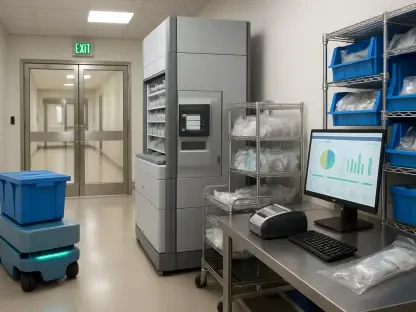As the aging population rapidly increases in South West England, concerns about the availability of long-term care for the elderly become more pressing. A recent analysis in the ‘South West Healthcare Market Insight 2025’ reveals that the region could face a significant shortfall of care home beds by 2035, casting a spotlight on the elderly care sector. The areas of Cornwall, Devon, Somerset, and West Dorset specifically exemplify these growing challenges, as the need for elderly care facilities accelerates in these locations. The proportion of residents over 65 in this region is already 35% higher than the national average, further exacerbating the pressure on the current infrastructure. Furthermore, the percentage of those aged 85 and over is 38% above the national mark, suggesting an imminent demand surge for more specialized elderly services. The complexities of this demographic trend reveal an urgent necessity for strategic planning and investment to avert a potential crisis looming over the next decade.
Regional Demand Insight
Demographics and Current Structure
The current demographic landscape in the South West of England illustrates a poignant case of imbalance between the demand and supply of elderly care facilities. With the region harboring an aging population considerably above the national average, existing care homes face an enormous burden to meet expected needs. Presently, it hosts 722 care homes, but only 24% of these are purpose-built, significantly lower than the 44% national average. This disparity is significant as purpose-built facilities typically accommodate modern standards better than their converted counterparts. Many existing homes lack the necessary infrastructure to support contemporary care practices, with only 26% outfitted with proper wetroom facilities, a crucial feature for ensuring dignified and efficient care for senior residents. This lack of modern facilities indicates a pressing vulnerability within the sector, highlighting the gap between existing services and evolving requirements.
Impact of Closures and Lagging Developments
Since 2021, South West England has faced a net gain of merely 101 care beds despite commendable efforts in new constructions. These expansions have scarcely balanced the closure of 64 previously operational establishments, signifying the sluggish pace at which new facilities replace lost capacities. The pace of facility development lags significantly behind what is necessary to satisfy the area’s demographic projections. As the population continues to age, the potential shortfall is set to climb to an alarming 23,056 beds by 2035 if current trends persist. Devon, in particular, appears on the brink of facing the starkest deficit. Current projections suggest this county will encounter a shortfall exceeding 10,616 beds, which legitimizes calls for increased regional focus and interventions to counterbalance this forecast. Mitigating these challenges necessitates proactive planning and solutions among policymakers and industry stakeholders.
Opportunities for Strategic Investment
Future Prospects and Economic Incentives
The projected shortfall in elderly care beds positions the South West as fertile ground for strategic investments in the healthcare industry. Identifying and exploiting these prospects is not only key to bridging the current gap but also an economic opportunity for sustainable development in the sector. By directing resources towards the construction of new care homes and the enhancement of current facilities, investors can play a pivotal role in transforming the region’s elderly care landscape. Modern designs and facilities are critical to this transformation, ensuring that forthcoming developments meet both current requirements and anticipate future demographic trends. This strategic approach holds promise in establishing robust, long-term care provisions that are attuned to the region’s evolving demographic profile and securing economic returns for investors.
Modernization and Long-term Viability
Streamlining care home provisions through contemporary design and updated facilities can cater effectively to the aging populace while ensuring the viability of care operations over an extended horizon. Embracing modern architectural designs and integrating comprehensive care amenities are pivotal steps in enhancing the appeal and functionality of future care homes. This forward-looking perspective encourages sustainability and competitiveness in a market increasingly challenged by changing demographics. Consequently, the viability of such investments is undeniable, providing solutions to an emergent societal need while simultaneously promising profitable returns. This approach not only addresses present inadequacies but also anticipates and mitigates future challenges, securing a more stable and capable care infrastructure for the region.
Strategic Solutions and Forward Thinking
To address this potential shortfall comprehensively, a concerted effort among relevant stakeholders is required, focusing on both immediate and long-term solutions. By emphasizing significant investment in new construction projects and upgrading current facilities, issues surrounding care quality and availability can be alleviated. Enhancement of care standards to include modern amenities and capabilities will be central in addressing the increased demand. Additionally, policymakers can incentivize strategic investments and partnerships that target infrastructure expansion, ensuring elderly care keeps pace with demographic changes. As these solutions unfold, the emphasis on a proactive rather than reactive strategy will solidify the groundwork for the elderly care sector to thrive, ultimately offering a coherent response to an impending demographic shift.









